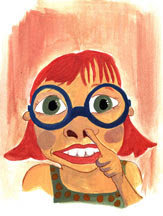I. Historically, museums and cultural art institutions have displayed relics and art of "foreign" countries and lands via intricate exhibition designs. While this method of display serves the purpose of representation and documentation, the rich histories and provenance of the objects are often not communicated to the viewer in an adequate and engaging manner. I am investigating alternative methods for the presentation, representation and communication of cultural property. Having worked in museums for the past 15 yrs, I have always been interested in new ways to view art and for this project I wanted to build upon that interest and experience in order to prototype a potential vehicle for viewing Himalayan art in a culturally sensitive and accessible manner. For this investigation my solution was to create a game that asks the viewer to look at art by examining the absence of the art- that is art that was either lost, stolen or vandalized during war time aka ART CRIMES.
II. Before I reached the concept of a creating a game:
- i looked into areas of field that had similar domains:
- other museums
-games
-books
- comics
III. Based on my research, I had determined that gaming was a valid method for experimentation.
- it had been a major area of overlap (VENN)
- it was an area that museums were beginning to get involved with
- its something that has an audience but yet is ripe for exploration in my domains
IV. Prior to coming up with the actual game, I had struggled with how to bring the idea of provenance into the viewing experience
- previous work experience at ALR
- Quicktime VR
- Games
V.The PROJECT
- after first efforts I delve into the prototyping process
storyboard
3 questions
audience
ways to communicate history
additional application- in connection with schools/educational setting
Friday, December 5, 2008
Subscribe to:
Post Comments (Atom)





No comments:
Post a Comment